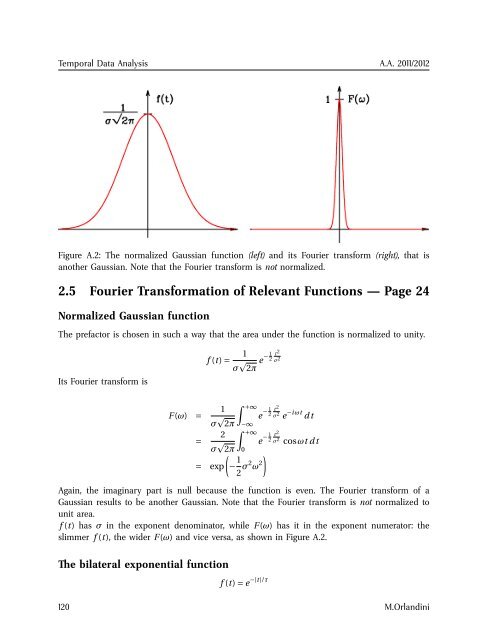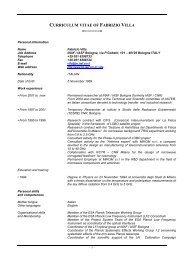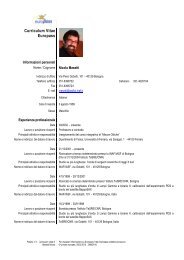booklet format - inaf iasf bologna
booklet format - inaf iasf bologna
booklet format - inaf iasf bologna
Create successful ePaper yourself
Turn your PDF publications into a flip-book with our unique Google optimized e-Paper software.
Temporal Data Analysis A.A. 2011/2012<br />
Figure A.2: The normalized Gaussian function (left) and its Fourier transform (right), that is<br />
another Gaussian. Note that the Fourier transform is not normalized.<br />
2.5 Fourier Trans<strong>format</strong>ion of Relevant Functions — Page 24<br />
Normalized Gaussian function<br />
The prefactor is chosen in such a way that the area under the function is normalized to unity.<br />
Its Fourier transform is<br />
f (t) = 1<br />
σ 1 2π e− 2<br />
t 2<br />
σ 2<br />
∫ +∞<br />
e − 1 t 2<br />
2<br />
−∞<br />
∫ +∞<br />
e − 1 t 2<br />
2 σ 2<br />
0<br />
1<br />
F (ω) =<br />
σ 2π<br />
2<br />
=<br />
σ 2π<br />
= exp<br />
(− 1 )<br />
2 σ2 ω 2<br />
σ 2 e −iωt dt<br />
cosωt dt<br />
Again, the imaginary part is null because the function is even. The Fourier transform of a<br />
Gaussian results to be another Gaussian. Note that the Fourier transform is not normalized to<br />
unit area.<br />
f (t) has σ in the exponent denominator, while F (ω) has it in the exponent numerator: the<br />
slimmer f (t), the wider F (ω) and vice versa, as shown in Figure A.2.<br />
The bilateral exponential function<br />
f (t) = e −|t|/τ<br />
120 M.Orlandini

















